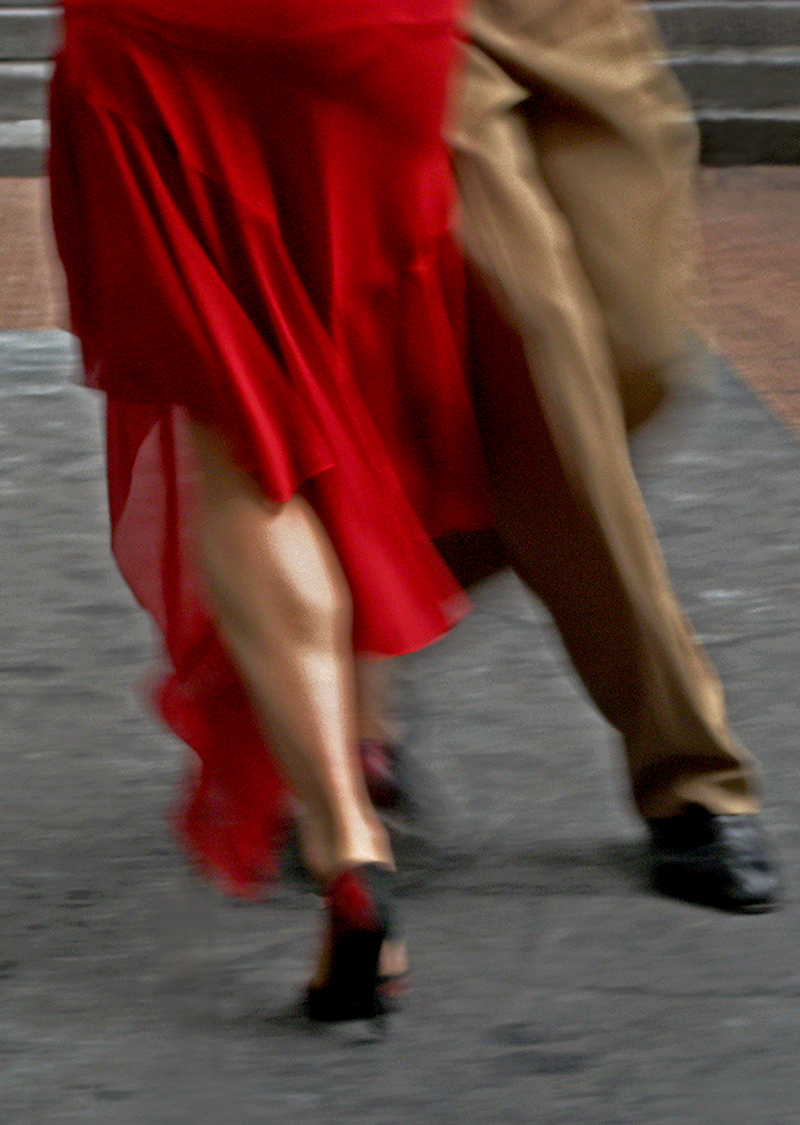Reenie Marx
PHOTOGRAPHER. TEACHER. WRITER
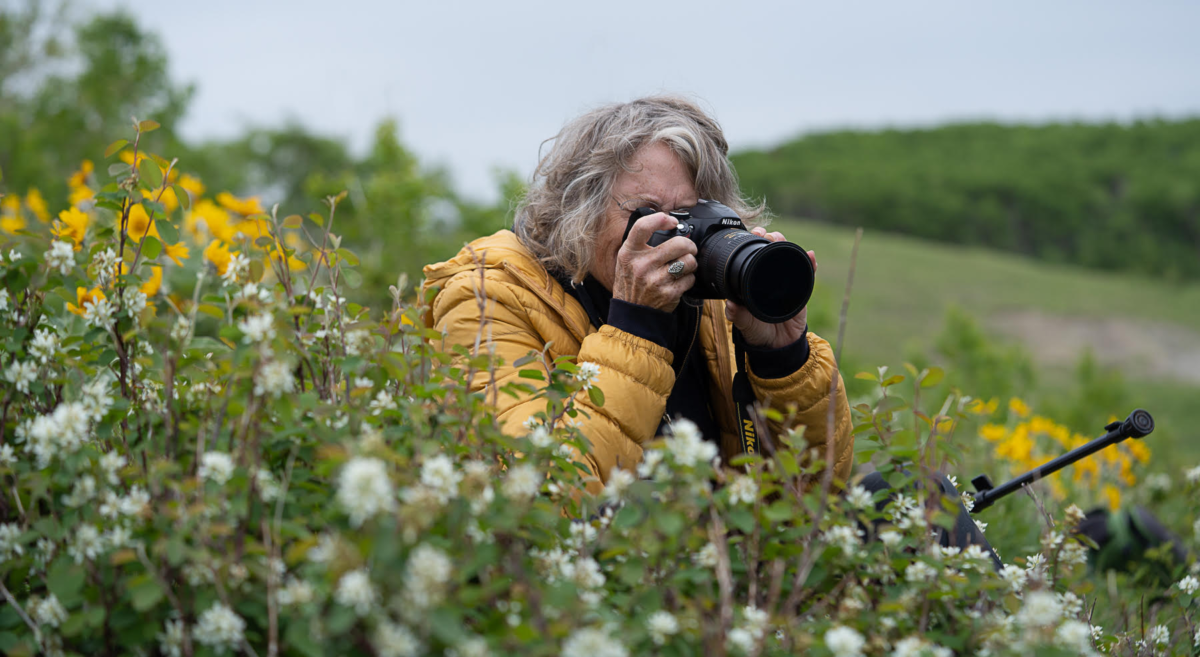
My Story
- Early Years
- On The Road 71-73
- Teaching: The Passionate Years
- Back To The Land
- The Transition
- Changing Perspectives
- Merging Passions
- Major Life Changes
Early Years
I fell in love with photography at age 17 when my father gave me his old Leica camera. I spent the next 5 years reading tons of books on photography, listening to the advice of professional photographers, and visiting The Art Institute to study the work of famous artists and black and white photographers. I never took any formal photography courses, but I was constantly learning.
After graduation from the University of Illinois I began teaching English in high school, and devoting as many evenings as possible to working in the darkroom I had set up in the kitchen of my small apartment in Chicago. I vividly remember my child-like wonder as I watched an image appear on a blank sheet of paper submerged in a clear liquid. It always felt a little like magic. It filled me with curiosity, a desire to experiment, and a willingness to learn from my mistakes.
The Leica was a huge teacher. I had to do everything manually so I had to learn how to work with a hand-held light meter, and compensate for the parallax of the lens. As soon as I had a bit of money from teaching I bought a Minolta SLR and things really took off. I began to play with timed exposure nudes of myself, visiting edgy parts of town to do street photography, and heading out into nature whenever I could.
I created textures in certain images by putting a nylon stocking or cheesecloth over my lens. I spent every weekend evening in my kitchen- darkroom learning how to burn and dodge with my hands and create layered images by sandwiching two or more negatives into my enlarger.
It was a time of great learning and creativity, but few of those images have survived the many years and moves of the past 60 years. Here are a few.


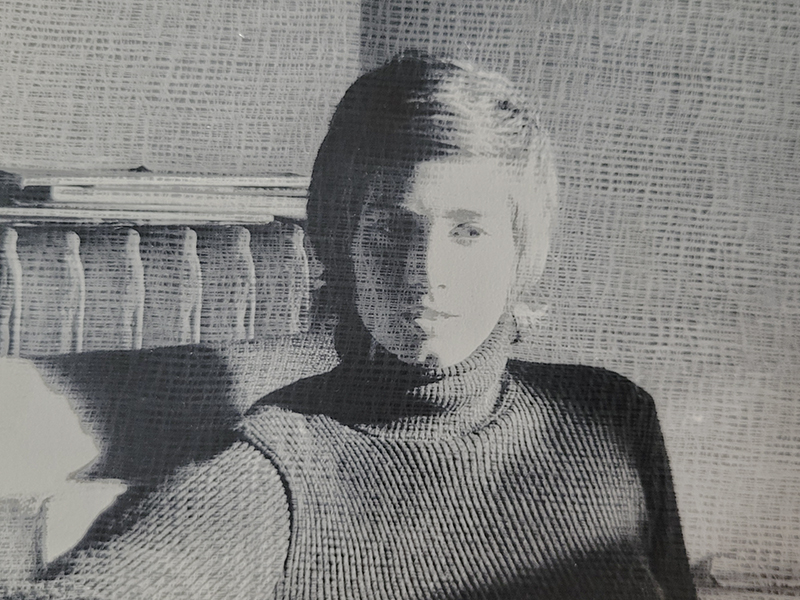
On The Road 71-73
In June of 1971, I walked away from a shattered marriage and an identity that had become too small. I had no sense of direction and barely even knew who I was, but I loved the freedom of hitchhiking, especially around upstate New York where I was living at the time. When a friend suggested we hitchhike together across Canada, I put a pack on my back, hung my Minolta camera around my neck, and began what turned into nearly a 3-year journey that took me all the way to India.
I loved the spontaneity of travelling, each moment was new, often exciting, and sometimes a little dangerous. But I learned how to travel cheaply and hitchhike safely, even alone. By the time I reached Chicago in late August I knew there was no going back to the life I’d had before; Europe was calling. I buried my fears at the bottom of my backpack and set off alone.
My ticket on Icelandic Airlines cost $198 and was good for a year. I had $500 in travellers’ cheques and was determined to stretch it as long as I could. After hitchhiking through Germany, Switzerland, and France I stopped in Barcelona to photograph the remarkable mosaics in Gaudi Park. There I met two seasoned California travellers who offered to take me to Athens in the back to their VW bug. I was flattered and quickly realized that the best skill a traveller could have was flexibility and openness to new ideas.
When we arrived in Athens I stood in line for my mail and overheard a conversation about ferries going to various islands. The next day I awoke, and without any real thought, told the guys that I was taking the ferry from Piraeus to the island of Crete that evening. Little did I know that I had an appointment with “destiny.” It was on that boat that I met Wendell, my future husband, who was travelling with a group of friends in his VW van. There was an instant connection between us, and after a sleepless night of conversation about everything from Jung to the I Ching, synchronicity and the hero’s journey, he convinced me to join him and his merry band. I said yes, and we moved into his van together that evening.
For the next 8 months we travelled around Crete, and, as always, I took endless black and white photos of the olive trees, fishermen, and different wild flowers that came in successive waves each month. I took up diary writing and drawing, flute playing, and meditation. My new life was all about self discovery, creativity, and learning about different cultures.
Meantime, Wendell got serious about making the van road worthy so that we could drive to India via the now famous “hippie trail.” In the fall of 1972 with a van full of books, medicines, and water purification pills we headed east. We moved quickly through Turkey and Iran, but when we got to Afghanistan, we fell in love with its stark beauty, proud people, and fascinating culture. It was a primitive place where heavy burdens were more often moved on human backs than on trucks. Vegetable dealers washed their sparkling lettuce in the murky ditch water that lined the streets, and huge slabs of wasp-covered meat hung on hooks in the market. The majority of women walked around under cloth coverings (chadors) much like the ghost costumes I wore at Halloween. I began to learn their customs as quickly as I could, and even a smattering of Farsi. I wore a long dress, donned a headscarf, and was able to walk safely through the bazaar, alone, even with my camera.
In early summer we formed a tribe with 15 other hippies and drove north towards Mazar-i-Sharif. Along the way we spent two months living beside a chain of lakes called Bandi-Amir (Lake of the Gods) where we became guests of a nearby Koochi tribe. They kept us alive with their naan, yogurt and eggs, and we tried to keep them alive with medicines we’d brought from the West. Only when the snow arrived in Kabul did we decide to leave. After paying bakshish for over-staying our visa, and convincing them to let us to take the Afghan hound I’d rescued from the market, we drove through the Khyber Pass to Pakistan. From there we headed into India. We spent about two months in the north of India, living much of that time in a Sikh monastery where we eventually left our beloved dog and were unofficially married by the head monk. Finally, with our money nearly gone, we boarded a plane in Lahore, Pakistan and flew to Germany at the end of December, 1972.
I’d been away from “civilization” for so long that something as simple as a hot water tap in the Frankfurt airport boggled my mind. It wasn’t so much that the times had changed, though they definitely had, it was more that I had changed. My beliefs, dreams, and very identity had been completely altered by the trip. Now, Wendell dreamed of building his own house, living off the land, and I once again said yes. We took off our backpacks, and began a new chapter of our lives.
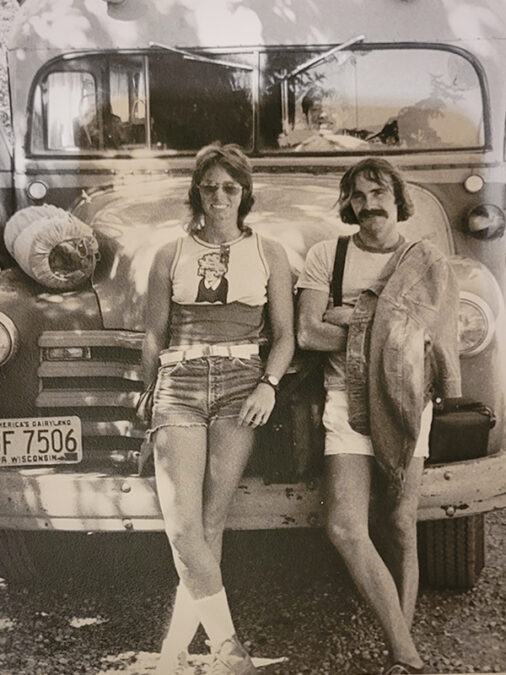
Me and Gerry, hitchhiking across Canada
Olive Tree Crete
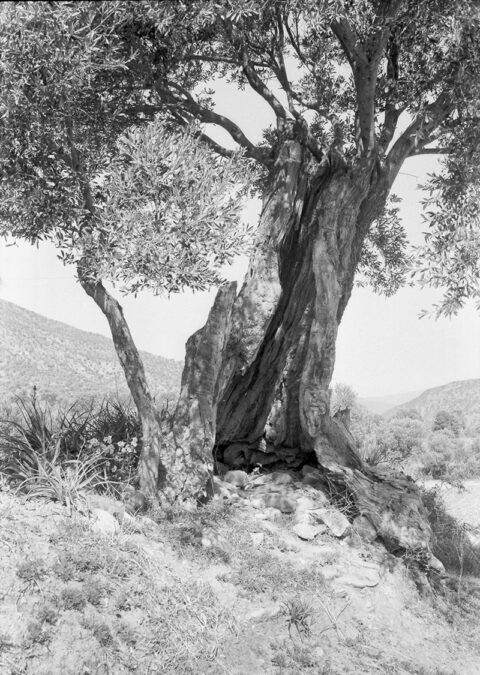
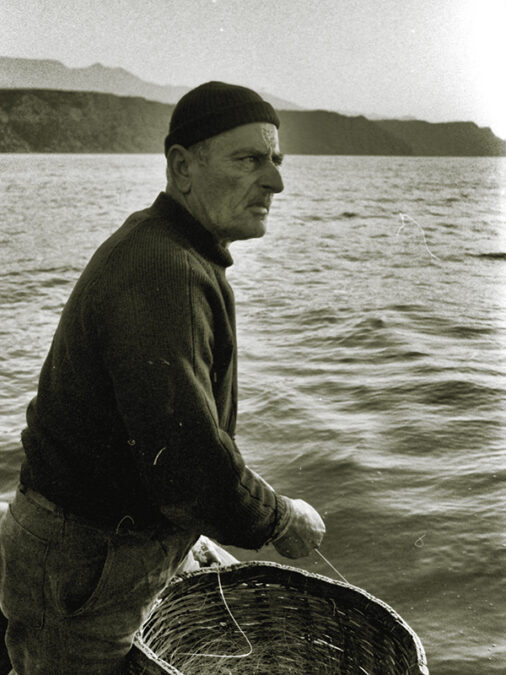
Yorgos, the fisherman who taught me greek
Me – Yougoslavia


Wendell – Afghanistan
Koochi children in Bandi Amir
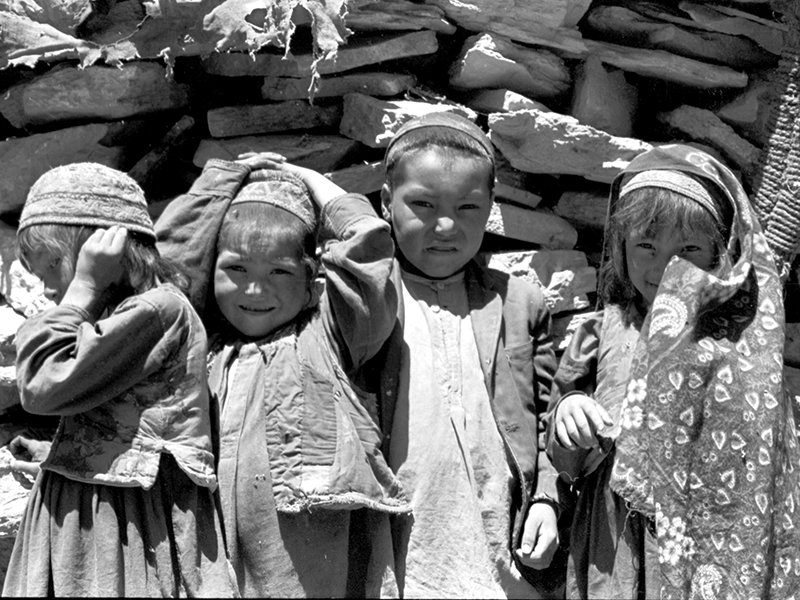

Afghan travellers
Kabul, Winter Clothes 1972
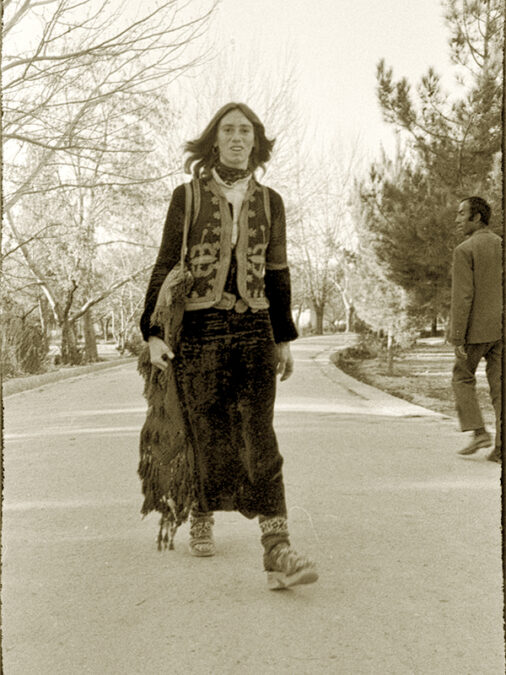
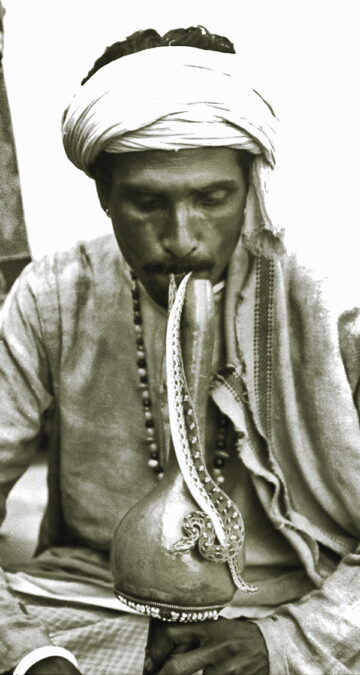
India Snake Charmer 1972

Fatepur Sikri India, 1972
Bandi Amir, Afghanistan, 1972

Teaching: The Passionate Years
Within a year of our return to Canada we settled in a remote area of the Laurentian mountains in Quebec near the confluence of the Maskinonge and Rouge Rivers.
While my husband built our piece sur piece log home by hand, I began a 32-year career in teaching that grew into such a passion that I no longer had time or interest in photography. My camera sat like one of the old nursery toys in the book The Velveteen Rabbit, once loved, but now forgotten. I had neither hope, nor expectation that it would ever light me up again, nor did I even think of it. Every bit of my energy and creativity went into teaching.
In 1974 a new course had just been introduced into the Quebec curriculum. Moral and Religious Education, (one of its many ever- changing titles), was a mandatory humanities and comparative religion course. They handed me a 7-page document and hired me to teach Secondary I through V. What some would have seen as nightmare, was for me a golden opportunity. I had the freedom to do almost anything I dreamed up, and dream I did. It felt like all those years of travelling had been the perfect preparation to teach this exact course.
In addition to the amazing class discussions and lifelong friendships that came out of those years, I created many elaborate projects and extra-curricular groups. The Euthanasia Trials were mock trials that took students almost three months to prepare for and a full day in an actual courtroom. The Rituals Unit allowed students to experience rituals from the Hindu, Jewish, Muslim and Shinto religions, replete with clothes, music, and food. I formed an environmental group, Eco-Net, that did fundraisers for Guatemala and the 30 Hour Famine, and began the first paper recycling program at school. Every year I brought Holocaust survivors to school so that kids could hear their stories first-hand. I taught seniors how to help the grade 7’s “postpone sexual involvement” through assertiveness training techniques. And Building Bridges, the project I envisioned doing after I retirement, where grade 9’s learned how to become oral historians and make video documentaries of some of the most amazing seniors in our community. I loved the thousands of kids I taught and that love and respect was mirrored back to me everyday. We accomplished amazing things together, changed each other’s lives, and even today, many of my former students remember what they learned back then. Few people are fortunate enough to earn their living doing the thing they most love. I was blessed, and I knew it even then.
And yet, around 2003 I began to feel something I’d felt before: a disturbing, inexplicable feeling that my life, the very identity I’d created, had become too small. I kept dreaming about bonsai trees, so beautiful, but stunted, and slowly I began to accept that I needed a larger container to grow, even though I had no idea what it would look like.
I retired from teaching in June, 2005 amidst a flood of tears, theirs and mine. I didn’t leave at the bottom of my career, but at the top. The Building Bridges Film Festival, attended by close to 500 people, became my “graduation.’ I received a standing ovation from the full auditorium and in that moment it was clear: I’d done what I came to do.
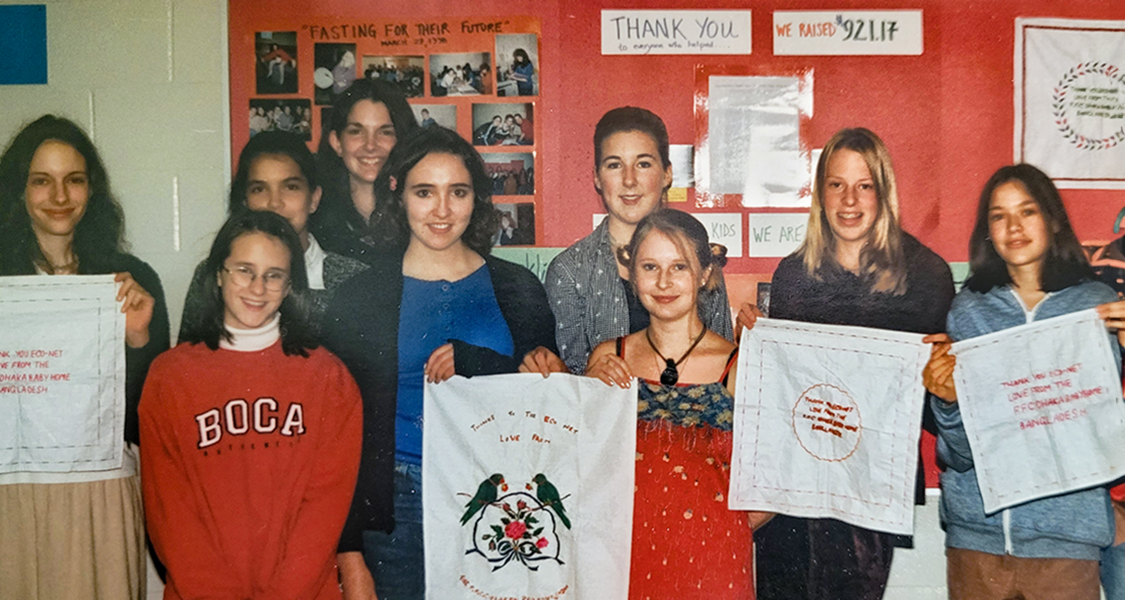
Eco-Net and Guatemalan Sale
The Euthanasia Trial: Lawyers and Witnesses waiting outside the courthouse while the jurors decide the verdict.
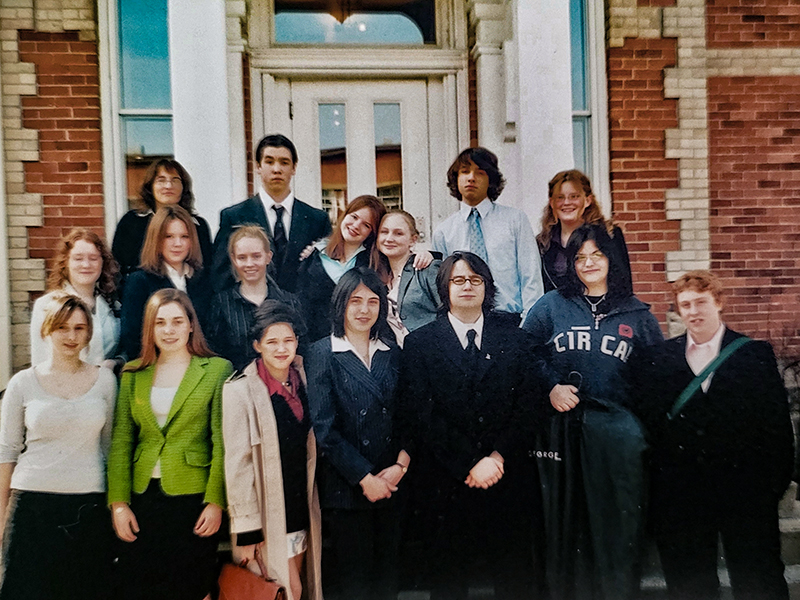

Hindu Wedding, from the Rituals Unit
Lindsay, This photo symbolizes what so many felt, the closeness, love and respect

Back To The Land
When we bought “the land,” as we used to refer to it, there was nothing but forest and wild grass. It was truly a field of dreams. We started out camping in a lean to made of plastic, but soon graduated to a 16-foot tepee. It was a beautiful structure, but the charm began to fade as an exceptionally rainy summer made it difficult to dry out our sleeping bags and the damp cold began to seep into our bones. When friends offered to sell us their huge old Findlay cookstove we happily accepted and built a 12 x 14-foot chipboard shack to house it, and ourselves.
For two years we lived in that cabane while Wendell built the house and I drove to school every day. We got our drinking water from a stream a short walk away, bathed in the Maskinonge River when the weather permitted, and used kerosene lamps to read at night. An outhouse was nearby, as was the telephone which sat on a log under a tarp a short distance away. I baked bread in the wood oven, washed our clothes in an old wringer washer, ate eggs from our chickens, vegetables from our garden and used the milk from our goats to make cheese and yogurt. After years of living in the van in places like Afghanistan and India, our “primitive living conditions” seemed totally normal to us.
In 1978, we finally got electricity, just in time for our musician friends to plug in their amps and play at our wedding. Finally, in 1980 we moved into the house, though it was far from finished. Two years later our son Matthew was born and we celebrated by putting in proper windows and a real shower in the bathroom! As Matt grew older, he and I got horses and rode often through neighbours’ fields which had yet to be posted “prive.” We were living the “back to the land” dream that was as much a part of the hippie culture as travelling to India. Wendell became a cabinet maker and practiced his skills building our kitchen until eventually he began making end grain maple cutting boards that he sold all over Quebec. We lived almost 28 miles from the nearest town, but friends came often on the weekends and stayed overnight to enjoy the beauty that surrounded us. Life was full to overflowing. I began and completed my Masters Degree at McGill and started a serious Vipassana meditation practice that included many 10-day silent retreats. I loved where we lived, but it wasn’t until I retired that I really began to see and appreciate it.



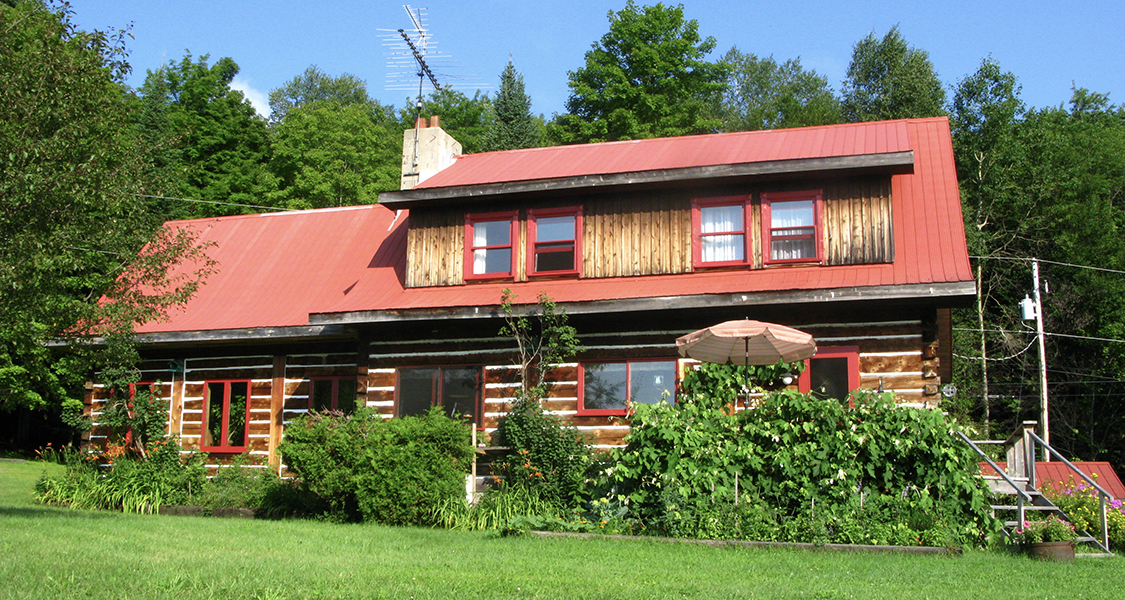
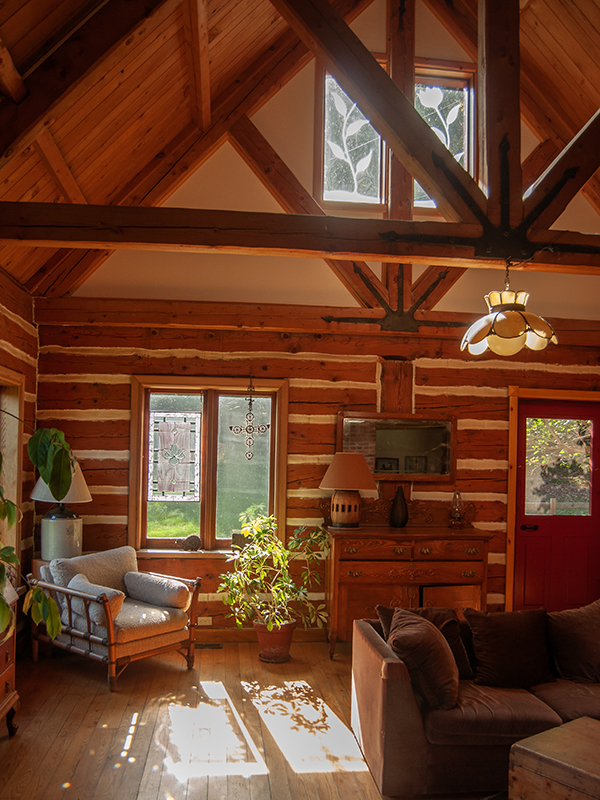
The Transition: 2005-06
Leaving teaching, a vocation that that had given me such purpose, meaning, and connection in life was unbelievably painful. It was like being skinned alive and it got worse before it got better. The consulting job to teach Building Bridges that I’d been hired to do became a casualty of strike actions that year. Suddenly I found myself in a very quiet place, with nothing to do, nowhere to go, no one to look after, and nowhere to put my creative energy. I felt empty, but by then I had a serious meditation practice and it helped.
I took up walking which was more like meandering or loafing as Walt Whitman called it; just wandering aimlessly through the forest behind our house, along the Maskinonge, or Mapp’s fields where I often rode my horse. Mary Oliver’s question frequently echoed in my mind, “What will you do with your one wild and precious life?” As the walks got longer, I became quieter inside and more present to the world around me. My habitual way of seeing began to shift, enabling me to see colours and textures with a vividness that stunned me.
I took Wendell’s suggestion and decided to try out my retirement gift: a Canon 3.2 mp point-and-shoot camera. It was a real love-hate relationship at first. I hated the absence of a proper viewfinder to shade the sun from the camera screen, but I loved that I could shoot more than 24 images at a time and check the photos right after taking them. I also loved its size, small enough to put in my fanny pack enabling me to crawl into tiny places, or climb down steep cliffs or muddy shorelines without worrying about damaging my expensive film camera.
Within months, my passion for photography came back to me with all the power of a lover who had been put on hold for way too long. I had no plans or expectations, no ambition or sense of my own talent. I didn’t even know how to get the pictures “out of the camera” when I started! But every day I’d walk miles with my camera, and every evening I’d sit in front of the computer trying to learn about digital photography.
Whether it was luck or grace, I had arrived at the right place at the right time. I was living in a place so beautiful that the local people called “God’s country,” and I had no job, or huge to-do lists to distract me. It was a perfect time and place for nurturing my new identity and forging my second career.
Rivington was still “undiscovered” back then, just a little piece of heaven at the end of miles of potholed roads from hell. I became a traveller in my own land, seeing it as if I’d just arrived there yesterday. One of my favourite places to explore was a place I called Hidden Lake, behind Mulligan’s Flats. I had no idea it was even there until I wandered down a dirt path the first time. But when I saw the reflections in the deep blue water, I fell in love with it. I came back over and over with my camera and dog, Kubla. We’d huddle together for warmth in the winter, explore the ice patterns in the early spring, or lie in the sun in the summer.
Many times, I’d drive to the Rouge River to sit under the bridge listening to the roar of the river, or meditate on a rock on the Maskinonge River, and I always had my camera nearby. My creative fires were blazing again, and by 2006 I knew I needed a proper digital camera, with a viewfinder and exchangeable lenses, so I sold my darkroom equipment and used the money to buy my first proper digital SLR camera, a Nikon S40. One year after retirement I had made the transition from film to digital, from teaching to photography, and begun the next chapter of my life.





Changing Perspectives
The purchase of my first digital SLR signalled a new seriousness in my photography. Before, I’d go out with the intention of taking photos of the forest, or river, or some new wild flowers, but soon I discovered that my intentions, to go somewhere to photograph something specific, were actually preventing me from seeing everything along the way.
I realized that I needed to let go of the part of me that believed “it knew best,” because it was full of judgments and preconceptions about what constituted a good or bad photo, or even the concept of beauty.


AS I LET GO OF MY LIMITED CONCEPT OF BEAUTY, I BEGAN TO FIND IT EVERYWHERE, IN EVERYTHING.
It was the beginning of a whole new way of photographing for me, somewhat similar to the Buddhist meditation concept of “beginner’s mind.” I called this new perception “the art of seeing,” but just like meditation practice, it took time and practice for me to be able to see the world this way.
Each day I’d head out the door and tell Wendell that I was just going to see “what wanted it’s picture taken that day.” Then, using my meditation practice to slow down and silence my mind, I’d watch for a texture, color, pattern or play of shadows to catch my attention until I could almost hear it saying, “Take my picture please.”

Blowing in the Wind, Rivington, 2005
This was one of my first “art of seeing” photos, taken near our garden in the fall. The wind was blowing and the sun was shining on the soon to be blown away milkweed seedpods. It stopped me dead in my tracks as I was walking out the driveway. I have sold this photo over and over again, but in all my years of photographing milkweeds I’ve never seen one that looked like this. It was the first of many gifts from nature, because I was finally able to “see” what was right there in front of me.
Walking in this way made every moment feel like a kind of revelation. I’d walk down unpaved roads with deep potholes and see wolf-like faces in the rain filled puddles, or notice feminine forms in the waves, or faces in the cliffs along the Rouge River. I gave up allegiance to consensual reality and began turning my images in whatever direction I saw them in my mind’s eye.
In July of 2006 I began actively selling my photos at juried art and craft shows in Toronto, Kingston, Montreal and Ottawa as well as at many local markets, like Finnegan’s in Hudson, Quebec. When Wendell contracted macular degeneration, we had to leave our beloved home and the natural beauty that had so inspired me. We found a new home and friends in the vibrant artistic community of Vankleek Hill. I continued going to shows and Wendell helped build a studio in our home where I could show my images. I became a board member of our local art gallery, and started teaching digital photography classes in our home. In 2020 all that changed dramatically.


Rain is this photographer’s best friend. The lichen’s rich varied colours were only visible when wet.

A decaying leaf filled with rain looks like translucent glass.

Birth of a Mermaid was taken with my 3.25mp Canon. It took over a year, and the help of a client for me to see the female form emerging from the waves. It has always felt like a gift of encouragement from my beloved Rouge River.
Merging Passions 2018-2019
There are times in all of our lives when it feels like things are coming together, and other times, when it feels like they’re falling apart. In the space of the past four years, I have experienced both.

In 2019 I began a very creative phase of my life. I wrote my first book, designed and taught three new courses, all online, reawakened my love of doodling and water colour painting, and had a solo show at Arbor Gallery. The book idea was just going to be a little teaching tool for my photography students, but it quickly took on a life of its own, dictating whole sentences or choices of images while I was driving, showering, or about to go to sleep. It took several months and a good editor, (my son), before it was ready to be published and printed. The Tao of Water is available from blurb.com
No sooner was the book published than I began dreaming of a course that would enable me to combine my love of photography and teaching, with meditation and small group discussions. Discovering the I Behind the Eye was ready to launch in February of 2020 when COVID hit. Within a month everything was shut down and, I, like so many, had to learn how to teach in the online world. The course began in the darkest months of Covid isolation when people were starved for affection and stimulation, but it became so nourishing and healing for the women who participated that it went on for almost 3 years.

I also started doodling again, but this time in a serious way, using coloured pencils and often watercolours. Sometimes I’d be up until one in the morning, never realizing the time. I produced literally hundreds of doodles over the space of about 14 months. After they were finished, I’d photograph them and one evening the idea came to combine them with some of my own photos. The images that were created were neither doodle nor photo, but something completely new.
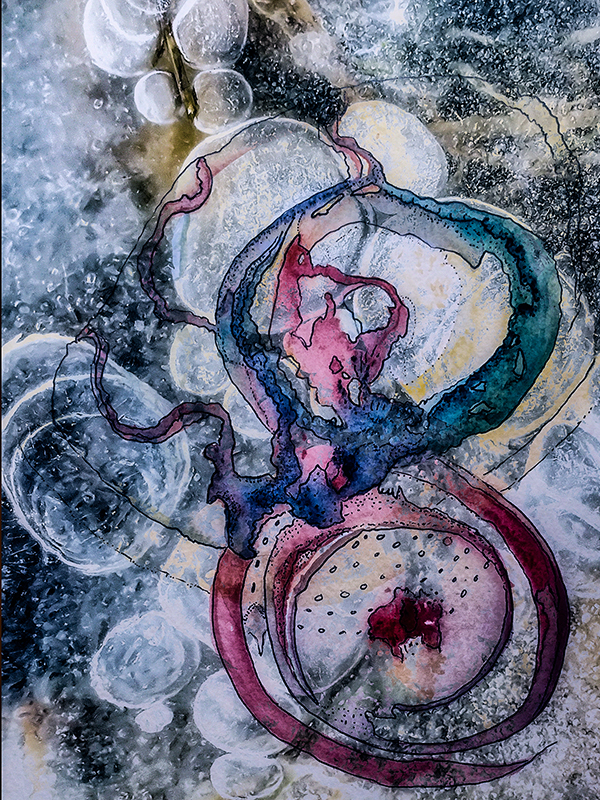

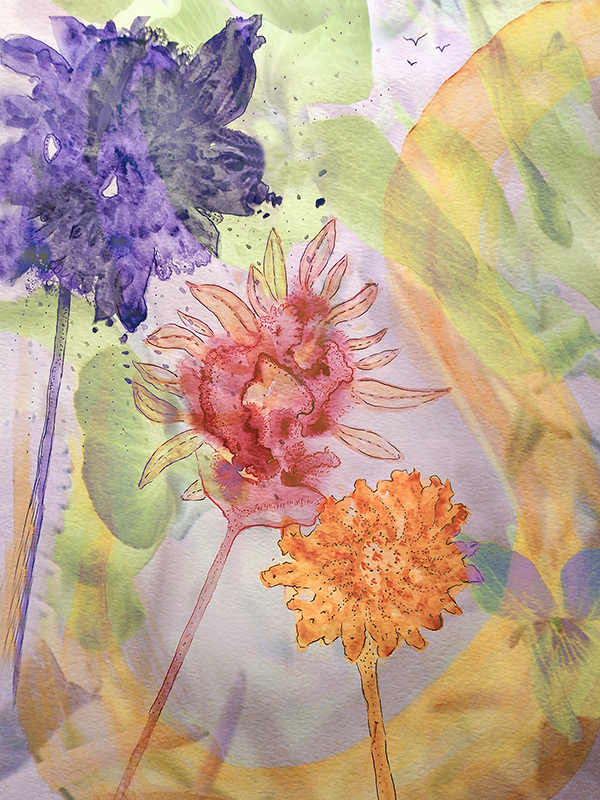
What fascinated me most was that the doodles had the same capacity as the photos to help a person become more aware of themselves and their feelings. On a whim I decided to offer DoodleSpace online and it too took off. It all seemed like so much fun, so effortless, but like all things, it too was about to pass, and very soon.
Major Life Changes 2020-2024
In April of 2020, while the borders between the U.S. and Canada were still locked tight, my beloved sister was diagnosed with fatal brain cancer and I couldn’t get down there to be with her. It was a devastating loss from which I’d barely recovered when I learned six months later that Wendell had an even more aggressive type of brain cancer and had only 12-16 weeks to live. That’s when the wheels totally came off my creative engine and I ground to a halt.
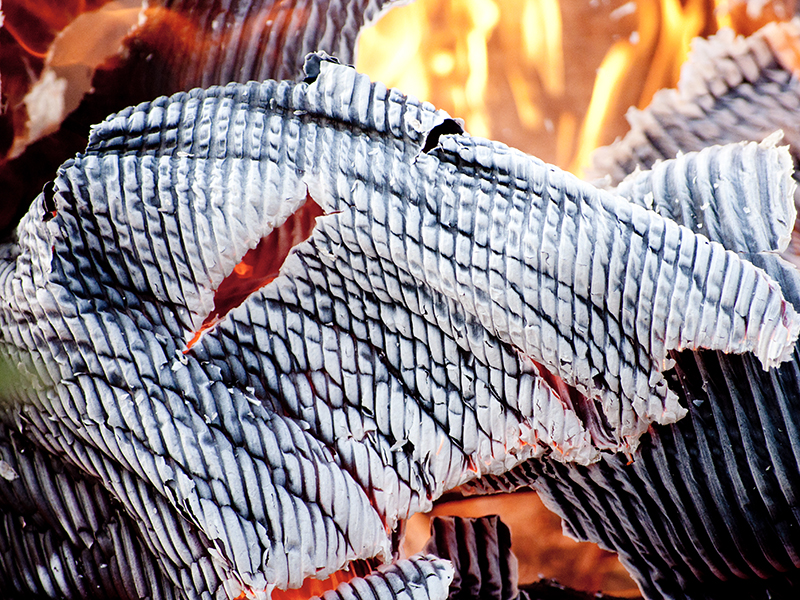
There was no time or interest in doing anything other than looking after him, our son, and myself as much as possible. Those 12 weeks were amongst the most difficult, loving, and beautiful in all our years together. Losing Wendell was a life changing experience, not only because his honesty and courage in facing death helped me conquer some of my own fears, but also because I learned what is, and isn’t important in life.
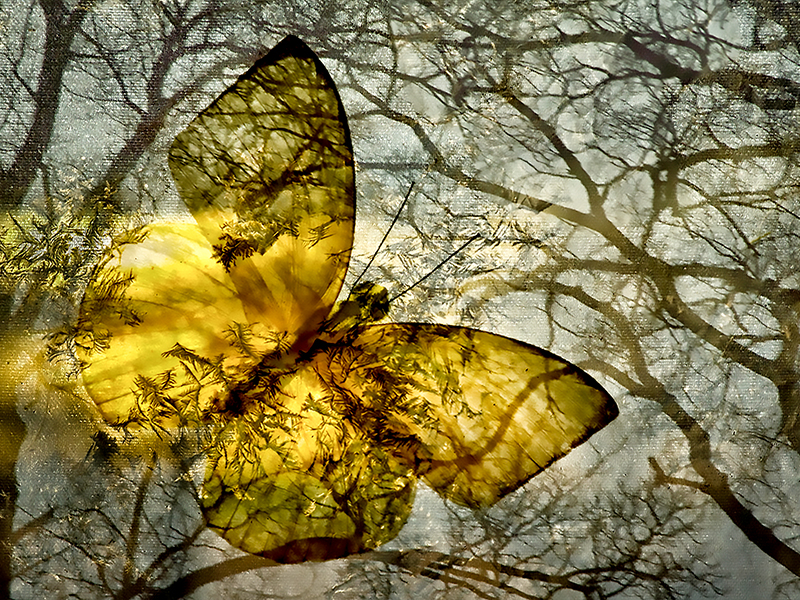
When you lose a partner of fifty years, a part of you dies too. When Wendell passed on June 9, 2021 I disappeared too. The loss was so profound that I had no idea if I’d ever take another photo or teach another course. I drifted through the days and months without a desire to do anything.
Slowly, slowly the return began. And then, seven months later came the next life changing event. I reconnected with a man I’d fallen in love with fifty years ago, even before I met Wendell. It was the last thing I wanted, or expected, but that seems to the story of my life. The re-entry of Michael into my life was akin to a total rebirth. The experience was so powerful that I was asked by a former student, now a CBC reporter, to write a story about it for their website. It’s called, “Never Too Old for Love”.
As I began to come back to life, so did the old passions for teaching, photography, writing, and drawing, but now a new passion has entered. Michael and I have waited almost a lifetime to be together, and for me, spending time with the one I love is at the top of my list of truly important things in life. Still, I’ve spent the last 15 months building a new website, full of ways to express my creativity in the future. Will there be more books? Courses? New photos? Blogs? Interactive Conversations? Almost certainly, but for now, this is enough.
